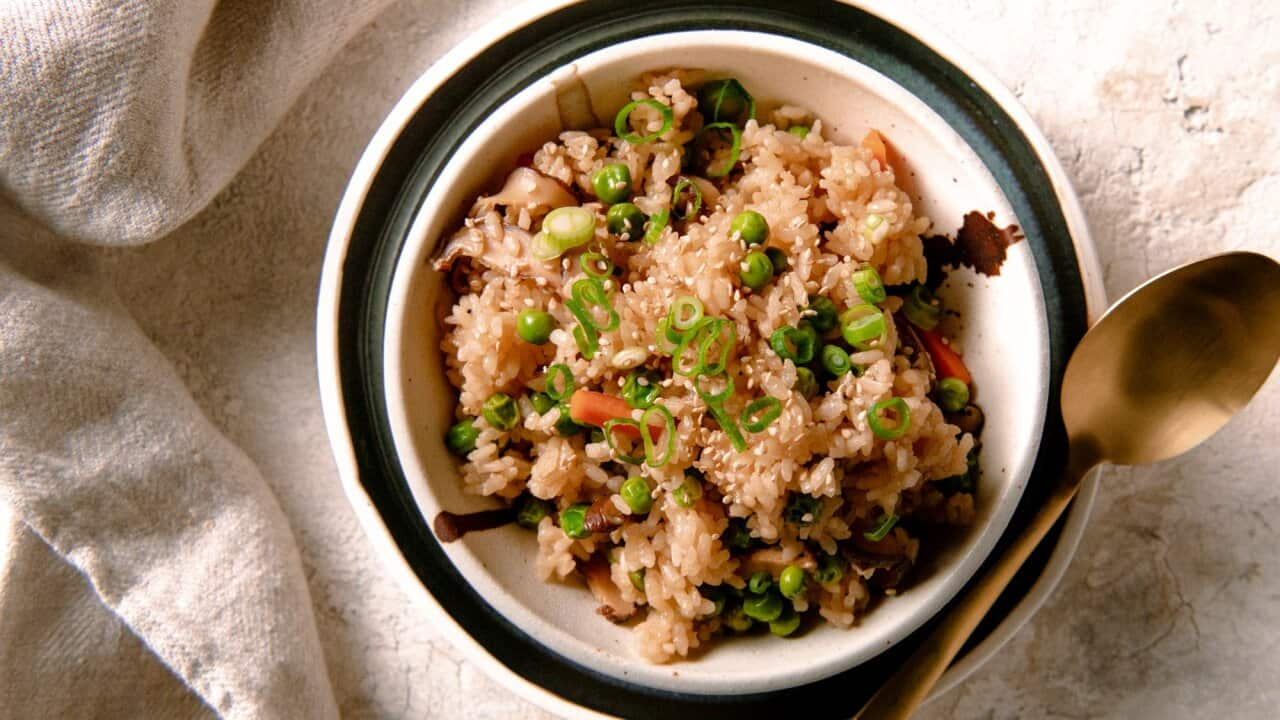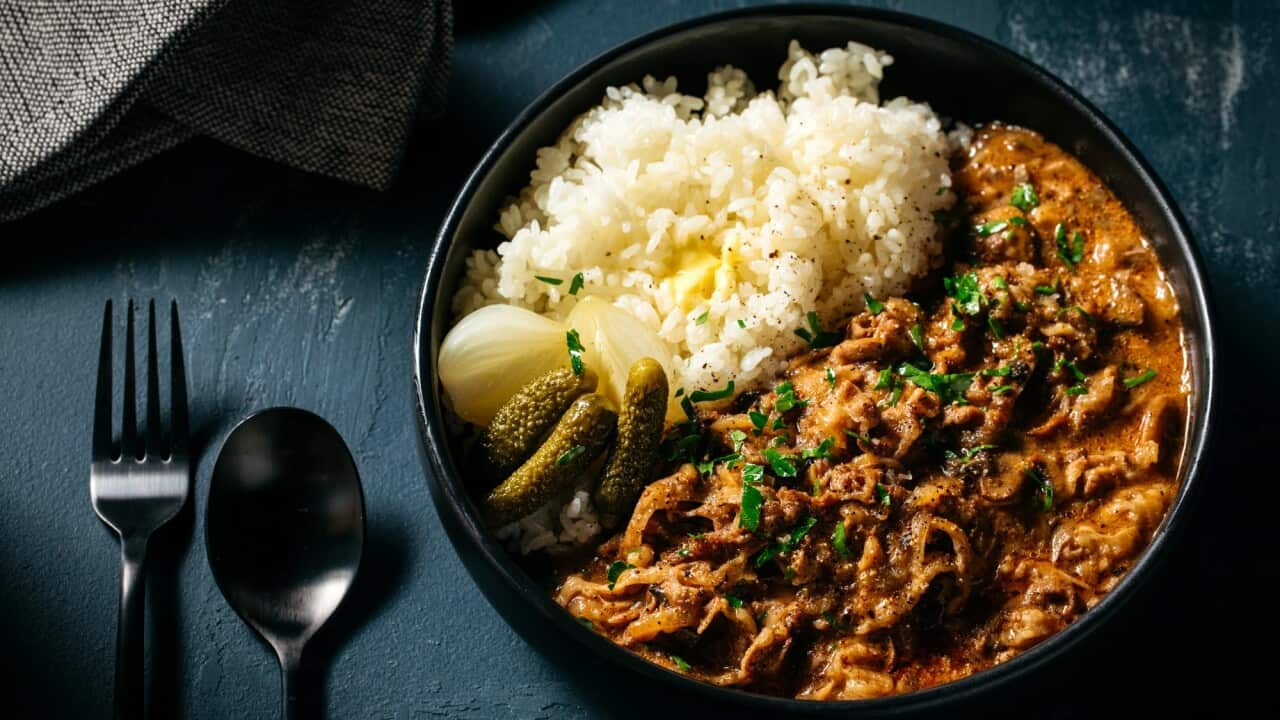-- 's fifth season airs weeknights on SBS Food(Ch.33) at 7.00pm. All episodes available anytime on . ---
Onigiri, or rice balls, have been a staple of Japanese bento boxes for centuries. Historians say onigiri have been eaten since the Yayoi period (300 BCE to 300 CE) when rice cultivation began.
While these balls of rice ( they can be triangular or cylindrical) with fillings wrapped in seaweed have always been a 'home-made' dish, social media, inbound tourists, and rising living costs have helped hoist affordable onigiri onto the centre stage more recently.

Taro Tokyo Onigiri is a take-out store in Toranomon, Tokyo, that focus on ingredients and creation. Credit: Taro Tokyo Onigiri/PR Times
Rice farmers are looking at this new trend with hope, as domestically, rice consumption in Japan is still on a downward trend, due to the population looking at bread as a convenient alternative.
Onigiri-stores in Australia
Mitsuhiro Yashio is a renowned chef in Sydney who recently boarded on to the trend, opening an onigiri-speciality store, Otogo, in Ultimo.
The Kyoto-trained chef is a well-respected community member, with diplomats visiting his Darlinghurst store, Yachio Japanese Dining, from as far as Canberra.
Serving onigiri along with other dishes such as soba and fried chicken, Otogo is an entirely different venture for the seasoned traditional chef.
“I wanted to provide a healthier alternative to what we consider as fast-food today”, he tells SBS Food.

All orders at Otogo is via self-service kiosk. Credit: Yusuke Oba
While the machine takes charge of the rice, Yashio focuses all his knowledge and experience on the fillings, including miso-grilled salmon, blue-fin tuna toro, shabu shabu pork, to just name a few.

Credit: Yusuke Oba
In Japan, primary schools serve students lunches, so bento from home is often associated with excursions and sports carnivals. “Onigiri brings back so many childhood memories,” she says.
“I hope onigiri will become a light, everyday food that can be eaten as a substitute for sandwiches or as a snack,” she tells SBS Food.
The snack-sized onigiri is perfect as a grab-and-go lunch for office workers, people going on a morning stroll, and of course, children who can help themselves to the food.
Over in West Melbourne, 279 has gained a strong following since its opening in 2019. A venture by Japanese chef Kantaro Okada and coffee guru Austin Allen, 279 serves variety of onigiri from the traditional shiso-konbu and sha-ke (salmon) to modern versions such as mentai cream cheese and spicy tuna.
You can add osozai (side dishes) and miso soup to your onigiri and make it a meal, or take away Japanese-style bento boxes.
Onigirazu helping the boom
Helping the onigiri boom , a few years back. Onigirazu is a type of onigiri that is not shaped in your hands, but rather, made like a sandwich, flat on the kitchen bench.
“Onigirazu is basically a sushi sandwich,” Adam Liaw explained on The Cook Up.

Credit: Adam Liaw
“Quite often filling is not something that we make in the morning, it’s actually something that we had the night before,” says Adam, referring to lunch making in the Liaw household.
TRY THE RECIPE

Onigirazu
The versatility seen in onigirazu makes it a great way to use up leftovers. Now it's time for its smaller cousin, onigiri, to have a moment to shine.









